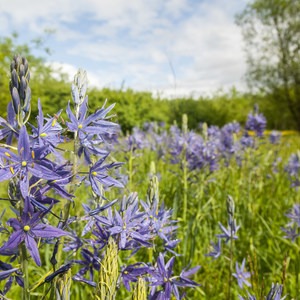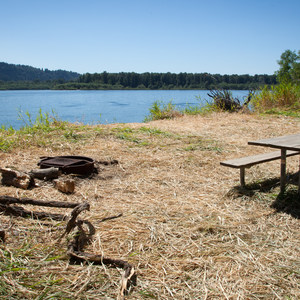Right on the southeastern edge of the Portland Metro Area and across the freeway from the Clackamas Town Center lies an absolutely unique biological preserve, Mount Talbert Nature Park. Encompassing much of the long-extinct, 750-foot tall volcanic* butte, Mount Talbert Nature Park offers visitors 4.2 miles of well-maintained hiking trails through native conifer woodland in addition to picnic facilities and interpretive signage.
The park's most unique feature, however, is that it functions as a living lab and experimental forest where prairie burning, a practice once implemented throughout the Willamette Valley by the native Kalapuya tribe, is being tested as a strategy to strengthen and diversify the park's 200-acre ecosystem. According to Metro:
Although the [Willamette] valley could support fir forests, prairies and oaks were preserved through controlled burning... Burning in the valley during the late summer encouraged the growth of plants that supplied tribes with food, fiber and medicine, and improved hunting.
Interestingly, many of the prairie flowers used by the Kalapuya need fire to germinate, including:
-
Western buttercup (Ranunculus occidentalis): this was used as a poison by natives from Alaska's Aleutian Islands.
-
Oregon "toughleaf" iris (Iris tenax): the fibers were used for rope and string.
-
Camas (Camassia quamash): the bulbous root was cooked, and it is said to "taste like baked pear."
As you walk through these oak and prairie restoration areas, look closely to see how the habitat morphs and which flora and fauna thrive.
* Mount Talbert is a part of the same ancient volcanic field that includes Mount Tabor, Rocky Butte and Powell Butte.























Comments
Sign In and share them.